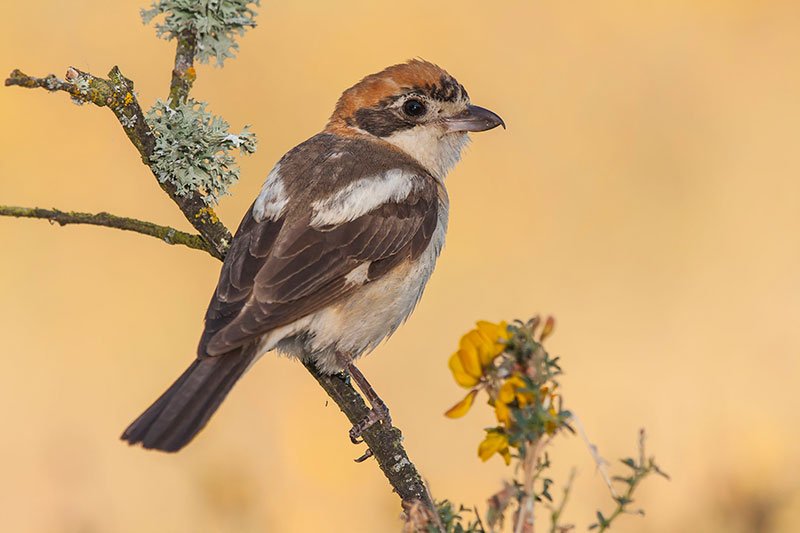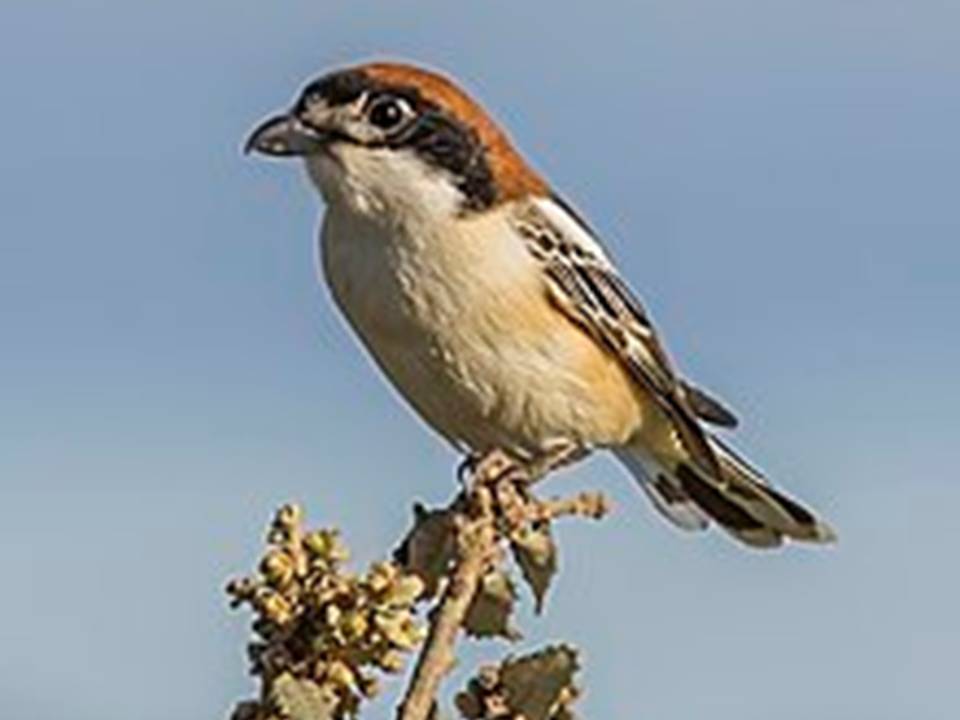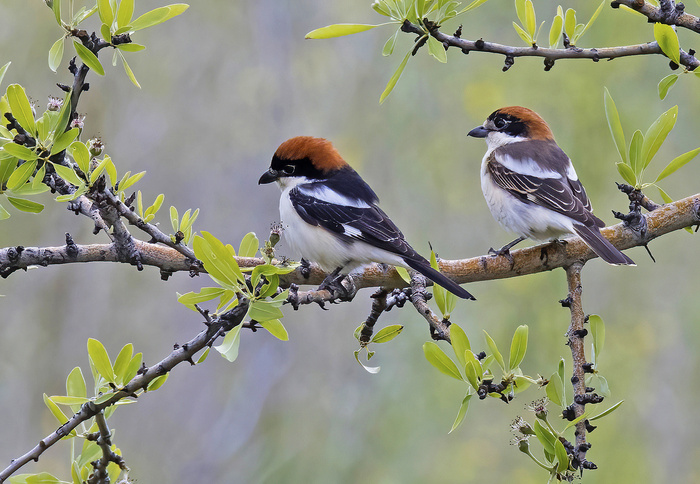Description
The Woodchat Shrike, known as Lanius senator, is a small passerine bird that belongs to the shrike family, Laniidae. This bird is widely distributed across North Africa, parts of Asia and Europe including Cyprus. It is known for its striking appearance, with a black mask extending from its bill to its neck, contrasting with a white face and throat. The upperparts are a mix of black, white, and gray, while its under parts are a pale pinkish-brown colour.
Food and Feedding
The woodchat shrike mainly eats insects, particularly beetles. Its diet can include other invertebrates and very occasionally small mammals and small birds. It hunts by perching on an exposed lookout such as on a branch of a tree or on a fence. When anything of its prey is spotted, it drops or glides down to catch it. It also makes sallying flights after flying insects. Small

insects are crushed in its bill but large insects are dismembered. Impaling prey on a thorn has been recorded but is unusual. Indigestible material such as chitin, bones and hair is regurgitated as pellets.
Distribution and habitat
The Woodchat Shrike can be found in Cyprus during the breeding season, typically from April to August. They are commonly found in open woodland, scrubland, and agricultural areas across the island. They are adept hunters, preying on insects, small birds, and occasionally small mammals. Their hunting technique involves perching on an exposed branch or wire and scanning the surroundings for potential prey.

Once spotted, they swoop down to capture their target with their sharp, hooked bill.
Breeding
During the breeding season, male Woodchat Shrikes establish and defend their territories through vocalizations and displays. They build their nests in dense shrubs or low trees, using twigs, grass, and other plant materials. The female lays a clutch of eggs, typically numbering 4-6, and both parents take turns incubating the eggs and feeding the chicks.
The Woodchat Shrike is a migratory species, spending the winter months in sub-Saharan Africa. During the spring is returning to its breeding grounds in Europe and Asia. Its migration is an impressive feat, covering thousands of kilometers each way. In Cyprus you will find the Woodchat Shrike in lower and middle grounds forestry habitats.

Best Birdwatching Places
Cyprus is a great destination for birdwatchers and there are many places to spot the Woodchat Shrike. Here are some of the best birdwatching places in Cyprus where you can find this species:
Akhna Dam:
This is a great place to spot the Woodchat Shrike as well as other species such as the European Roller and the Eastern Olivaceous Warbler.
Paralimni Lake:
This is a wetland area that is home to many bird species including the Woodchat Shrike, the Little Egret, and the Black-winged Stilt.
Cape Greco:
This is a rocky headland that is a popular spot for birdwatching. You can spot the Woodchat Shrike as well as other species such as the Cyprus Warbler and the Sardinian Warbler.
Larnaca Salt Lake:
This is a saline lake that attracts many bird species including the Woodchat Shrike, the Greater Flamingo, and the Black-winged Stilt.
Paphos Forest:
This is a great spot for forest birdwatching and you can spot the Woodchat Shrike as well as other species such as the Eurasian Jay and the Eurasian Nuthatch.
I hope this helps you find the best birdwatching places in Cyprus for the Woodchat Shrike!
Conservation Efforts
Conservation efforts for the Woodchat Shrike focus on preserving its natural habitat, reducing threats such as habitat loss, and illegal hunting. By safeguarding the ecosystems where these birds reside, we can ensure the continued survival of this captivating species.


